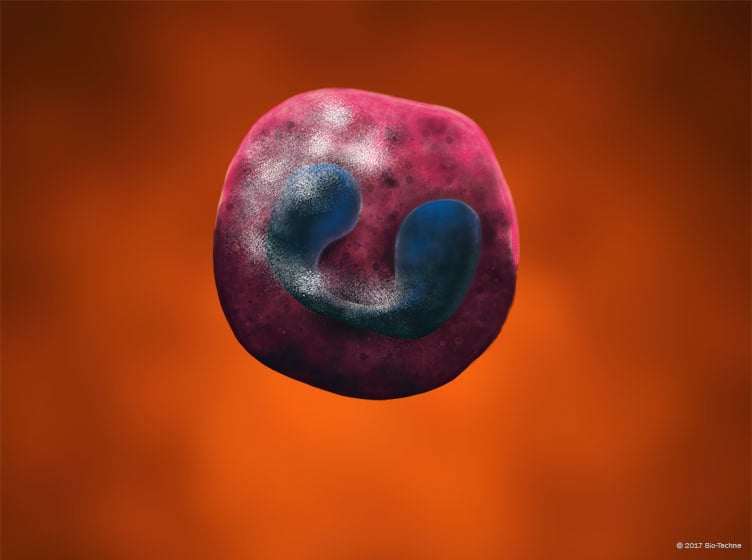Eosinophil Cell Markers
Click on one of the cell types shown in the buttons below to see the human and mouse markers commonly used to identify the different types of granulocytes.

Overview
Eosinophils are bone marrow-derived, granule-containing leukocytes that play a key role in the innate immune response to helminth infection and allergic disease. Eosinophils fully mature in the bone marrow and are found in the blood in low numbers and in specific tissues in higher numbers. In both mice and humans, IL-3, IL-5, and GM-CSF are important for eosinophil differentiation and expansion. Eosinophils function by releasing cytokines and cationic proteins, including eosinophil major basic proteins, eosinophil peroxidase (EPO), and mouse eosinophil-associated ribonucleases, or human eosinophil cationic protein (ECP) and eosinophil-derived neurotoxin (EDN), from their cytoplasmic granules. Due to their high granularity, eosinophils can be identified based on their high side scatter properties along with the cell surface expression of IL-5 R alpha, CCR3, and Siglec-8 in humans, or Siglec-F in mice, and the lack of expression of lineage-specific markers including CD4, CD8, and CD19. Other cell surface markers commonly used to identify eosinophils include CD11b/Integrin alpha M, and EMR1 in humans, or F4/80 in mice. In addition, eosinophils display increased expression of CD69, CX3CR1, B7-2/CD86, and MHC II upon activation.
